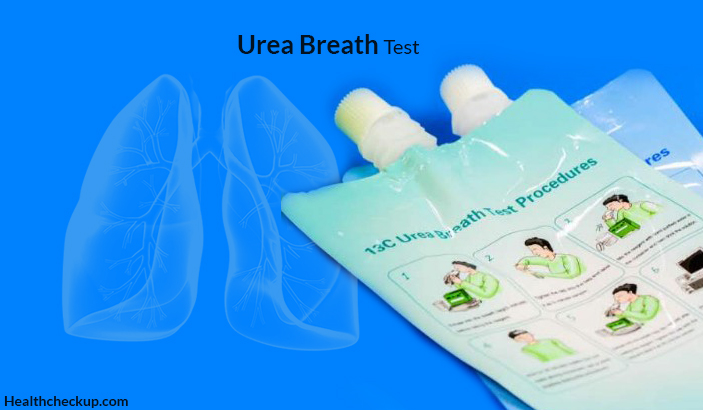H. Pylori (Helicobacter pylori) is gram negative spiral bacteria causing a gastric ulcer. The incidence and prevalence of this infection is growing worldwide and this infection is the most common cause for gastritis, gastric ulcer, peptic ulcer, dyspepsia etc.
Tests For The Detection Of H. Pylori
This infection can be detected by a urea breath test, serology (Elisa), stool examination and endoscopic examination. Amongst all these tests, the urea breath test is the fastest, safest and accurate test. So it is used very routinely by all gastroenterologist worldwide.
Urea Breath Test
The urea breath test is a rapid diagnostic procedure used to identify infections by H. Pylori. The urea breath test is based on the ability of H. Pylori to break down urea, a chemical made up of nitrogen and carbon, into carbon dioxide which then is absorbed from the stomach and eliminated in the breath (Urea normally is produced by the body from excess or waste nitrogen-containing chemicals and then eliminated in the urine).
Preparation For The Test
1. Fast for at least 6 hours prior to the test.
2. No smoking for 2 hours prior to the test
3. Ensure compliance with drug therapy. If you are taking some drugs (medications), you need to stop them prior to the test because these drugs can alter the results. These drugs are
- Antibiotics /Antibacterial – These drugs should be stopped at least 4 weeks before the urea breath test. Commonly used antibiotics like Amoxicillin, Bismuth Trinitrate, Clarithromycin, Tinidazole, Metronidazole, Tetracycline, Azithromycin etc should be stopped.
- Proton Pump Inhibitors (PPI s) – These drugs must be stopped at least 1 week prior to a urea breath test. Drugs like omeprazole pantoprazole, lansoprazole, esomeprazole etc.
- H2 Receptor Blocker – These drugs should be stopped 24 hours prior to a urea breath test. Commonly used drugs are cimetidine, famotidine, nizatidine, eznizatidine etc.
Procedure For The Test
You will ask to come in the morning after fasting. You need to be relaxed and calm. The procedure is very simple and safe.
- In sitting position, First collect the pre-test, baseline breath sample. You need to blow out a breath in the container provided by your doctor.
- Then swallow capsule or liquid given by your doctor or Healthcare Provider. This capsule or liquid is having isotope of carbon. This isotope carbon is actually measured and gives us the result.
- After swallowing capsule or liquid, you need to lie down on your left side for about 20 minutes. You are not allowed to drink or eat anything for these 20 minutes because this can alter the results. You need to breathe normally during these 20 minutes.
- After 20 minutes, the post-test breath sample is taken.
Both the samples (pre and post-test) are then run in the machine to identify isotope of carbon in the post-test sample.
Side Effects Of Urea Breath Test
Practically this test is not having any side effects. Till date, no adverse events during this test is noted. But Theoretically if a person is having an allergy to capsule or liquid then he or she can develop allergic reactions but again the possibility of this is very very rare.
Results
The measurement of carbon isotope in the post-test sample will give us the result.
Urea labeled with carbon isotope metabolized by H. Pylori of the stomach. So this free isotope of carbon eliminate in a breath and shows a positive result.
If H. Pylori is not present in the stomach, the post-test sample will not show carbon isotope and hence test is labeled as negative.
Advantages Of Urea Breath Test
- Highly Sensitive And Specific – This test is having 98% sensitivity and specificity which is considered good for any test.
- Non-Invasive Test – No needle or injection or blood pricking is needed in the test. So it is easily acceptable by patients without any fear.
- Safe – This test is devoid of any serious side effects hence very safe for patients.
- Therapeutic Benefits – Not only diagnostic but urea breath test is also useful for follow up. If the patient is positive and diagnosed based on this test and then started antibiotics for H. Pylori infection. The doctor will order a repeat test after the course of antibiotics. Now if the test comes negative then it is said that the patient is cured of H. Pylori infection.
Treatment Of H. Pylori Infection
Antibiotics and antacids are the mainstays of treatment for H. Pylori infection. Antibiotics like Clarithromycin and amoxicillin are best for H. Pylori infection.
In antacids, proton pump inhibitors (PPI) like pantoprazole, lansoprazole and esomeprazole are best. Commercially, H. Pylori Treatment kits are available which is having fixed doses of Clarithromycin, amoxicillin, and pantoprazole.
Duration of treatment is at least 2-3 weeks.
Along with medicines, certain lifestyle modifications like avoiding stress and tension avoiding oily and spicy food, avoiding large meals, weight reduction, smoking and alcohol deaddiction etc are also advisable.
Follow up: Your doctor might send you for follow up urea breath test after completion of treatment. If repeat test is negative then you are free from H. Pylori infection.

Dr. Kaushal M Bhavsar pursued his MD in Pulmonology. He is an Assistant Professor in Pulmonary Medicine, GMERS Medical College, Ahmedabad









